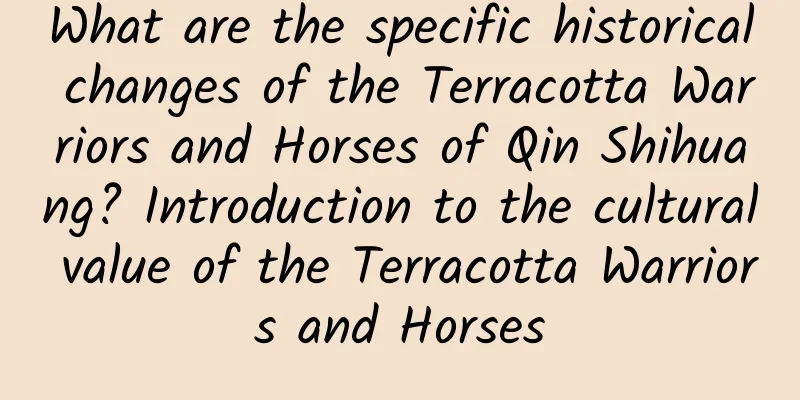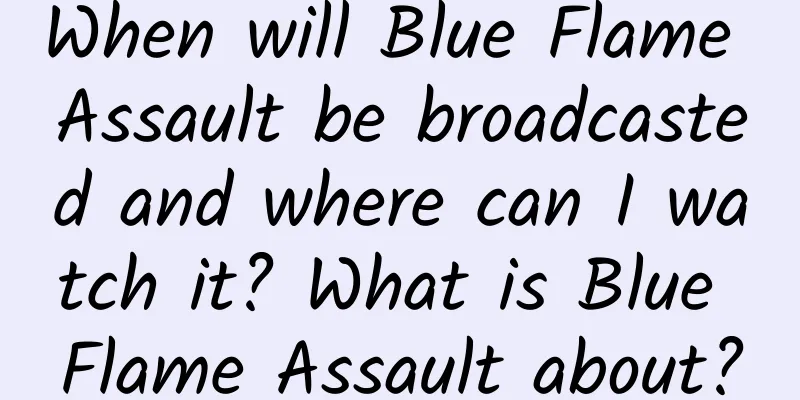What are the specific historical changes of the Terracotta Warriors and Horses of Qin Shihuang? Introduction to the cultural value of the Terracotta Warriors and Horses

|
The Terracotta Warriors, with their exquisite craftsmanship, have left a stunning example of realistic ancient art for the country and the nation. The Terracotta Warriors very intuitively show the unique characteristics of that era. The following will tell you about the historical changes of Qin Shihuang's Terracotta Warriors and how many Terracotta Warriors there are. Contents of this article 1. Historical changes of Qin Shihuang's Terracotta Warriors 2. Introduction to the Cultural Value of Terracotta Warriors 3. How many Terracotta Warriors are there? 1Historical changes of Qin Shihuang's Terracotta WarriorsAccording to the "Records of the Grand Historian", when Qin Shihuang ascended the throne, he ordered the construction of his own mausoleum. Li Si was in charge of the design, planning and construction, and it took 39 years to build. The Terracotta Warriors and Horses were made at the same time as the construction of the Qin Mausoleum and buried in burial pits. They were not seen until 1974, when they were excavated by archaeologists. The Mausoleum of Qin Shihuang was built in 208 BC. In 206 BC, Xiang Yu invaded Guanzhong and destroyed the mausoleum and the Terracotta Warriors and Horses Pit on a large scale. Since then, the mausoleum has been buried underground. In 1974, the Shaanxi Provincial Archaeological Team conducted exploration and trial excavation, and the Terracotta Warriors and Horses were unearthed. In 1987, the Terracotta Warriors and Horses of Qin Shihuang were listed on the World Heritage List. In 2009, the third large-scale excavation of the Terracotta Warriors and Horses Pit No. 1 of the Mausoleum of Qin Shihuang began. In July 1974, the archaeological excavation team entered the Qin Terracotta Warriors Pit site to excavate and repair Pit No. 1. In April 1976, they accidentally discovered Pit No. 2, and in May 1976, they discovered Pit No. 3. From 1976 to 1978, more than 10 restoration teams were added to carry out large-scale restoration of the Terracotta Warriors, including archaeologists, protectors, restorers, and photographers. 2Introduction to the Cultural Value of Terracotta WarriorsThe cultural value of the Terracotta Warriors is mainly reflected in the following two aspects: 1. Artistic value: The Terracotta Warriors were modeled after real soldiers and horses of that time. The exquisite craftsmanship well presents the characteristics of that era. 2. Historical value: As a kind of realistic art, the Terracotta Warriors and Horses allow people to understand the country’s glorious history and enhance their sense of home and country. Among the cultural values contained in the Terracotta Warriors, the artistic value is immeasurable. With their exquisite craftsmanship, the Terracotta Warriors have left a shocking example of realistic ancient art for the country and the nation. Among the cultural values of the Terracotta Warriors, the historical value is also of great significance. The Terracotta Warriors very intuitively show the unique characteristics of that era and have played a significant role in education and cultural communication. 3How many Terracotta Warriors are there?The number of Terracotta Warriors and Horses in Xi'an is more than 7,000. Pit No. 1 has about 6,000 soldiers, an infantry formation. Pit No. 2 has more than 900 soldiers and more than 470 horses, as well as 89 wooden chariots. Pit No. 3 has 64 warriors holding weapons and lined up to defend a chariot pulled by four horses. Pit No. 4 has no terracotta warriors, only backfilled soil. The Terracotta Warriors are arranged in three horizontal rows facing east, with 70 warriors in each row, a total of 210 warriors, who seem to be the vanguard of the army. The Terracotta Warriors and Horses Pit is about 1.5 kilometers east of the Mausoleum of Qin Shihuang. There are three pits, No. 1, No. 2 and No. 3. Pit No. 1 was discovered by local farmers when they were digging a well. After drilling, No. 2 and No. 3 were discovered. The architecture of Pit No. 2 is the same as that of Pit No. 1, but the formation is more complex and the types of troops are more complete. It is the most spectacular military formation of the three pits. |
Recommend
Side effects of taking short-acting contraceptive pills
Taking short-acting contraceptives will affect th...
Don't let air conditioning become a health killer! The secret to using air conditioning correctly in summer is revealed!
The scorching heat of summer makes us long to hid...
Pelvic effusion after pregnancy
After becoming pregnant, women hope that their ba...
Is it better to eat beans than meat? Plant protein or animal protein, which one do you prefer?
Everyone must have heard the debate about which i...
How to draw willow leaf eyebrows
Although the streets are full of various Internet...
Do you know how to sleep? There are some tips for sleeping when you have high blood pressure!
Sleeping can actually affect blood pressure? Norm...
What should I eat to recover quickly after a miscarriage?
If a miscarriage occurs, you must take good care ...
Is it normal to have diarrhea after medical abortion?
Is it normal to have diarrhea after medical abort...
Can a postpartum mother eat vinegar?
Vinegar is a common condiment in our daily diet. ...
Causes of multiple uterine fibroids
Many female friends may not know the cause of ute...
What are the long-term contraceptive methods for women?
For a period of time after marriage, many people ...
Are the symptoms of pregnancy and menstruation the same? Understand the common sense and don't confuse them
Sometimes some women tend to confuse the symptoms...
Why is Mapo Tofu called Mapo Tofu? The story behind Mapo Tofu
Tofu is a tonic, heat-clearing and health-promoti...
Will a woman's uterus sag during menstruation?
Generally speaking, every woman will have menstru...
What causes painful bleeding when women urinate?
In our lives, some female friends always feel ver...









